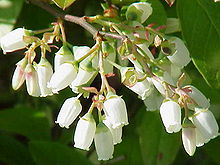New research reveals that hummingbirds and bumble bees are being exposed to neonicotinoid and other pesticides through routes that are widespread and complex. The findings are published in Environmental Toxicology & Chemistry.
To measure exposure to pesticides in these avian pollinators, investigators made novel use of cloacal fluid and fecal pellets from hummingbirds living near blueberry fields in British Columbia. They also collected bumble bees native to Canada, and their pollen, and blueberry leaves and flowers from within conventionally sprayed and organic blueberry farms.
The researchers detected pesticides and related compounds in cloacal fluid and fecal pellets of hummingbirds revealing for the first time that hummingbirds are exposed to and accumulate pesticide exposures of multiple types. In addition, bumble bees, their pollen, and blueberry flowers contained pesticides, with the highest concentration of the insecticide imidacloprid in pollen from organic farms.
“Hummingbirds and bumble bees are important pollinators of wild and agricultural plants and they survive each day on a razor’s edge due to their high energy needs,” said lead author Dr. Christine Bishop, of Environment and Climate Change Canada. “Pesticide exposure in these animals may have impacts on their health and the ecosystem services they provide to humans and wildlife.”
Rocky Point Bird Observatory, Hummingbird Project of British ColumbiaCanada
Abstract
To measure exposure to neonicotinoid and other pesticides in avian pollinators, we made novel use of cloacal fluid and fecal pellets from rufous (Selasphorus rufus) and Anna’s (Calypte anna) hummingbirds living near blueberry fields in the Fraser River Valley and Vancouver Island, British Columbia, Canada. To examine on‐farm exposure to pesticides in invertebrate pollinators, we also collected bumble bees native to Canada (Bombus mixtus, Bombus flavifrons, and Bombus melanopygus), their pollen, and blueberry leaves and flowers from within conventionally sprayed and organic blueberry farms. By sites and sample type, the results reported in the present study represent pooled samples (n = 1). In 2015 to 2016, the combined concentration of the neonicotinoid insecticides imidacloprid, thiamethoxam, and clothianidin detected in hummingbird cloacal fluid from sites near conventionally sprayed blueberry fields was 3.63 ng/mL (ppb). Among the 18 compounds measured in fecal pellets, including one neonicotinoid (imidacloprid), only piperonyl butoxide was detected (1.47–5.96 ng/g). Piperonyl butoxide is a cytochrome P450 inhibitor applied with some insecticides to increase their toxic efficacy. Only diazinon was detected in bumble bees (0.197 ng/g), whereas diazinon (1.54–1.7 ng/g) and imidacloprid (up to 18.4 ng/g) were detected in pollen collected from bumble bees including the bees from organic sites located near conventionally sprayed blueberry farms. Imidacloprid was also detected at 5.16 ng/g in blueberry flowers collected 1 yr post spray from 1 of 6 conventionally sprayed blueberry farms. Environ Toxicol Chem 2018;9999:1–10. © 2018 SETAC







